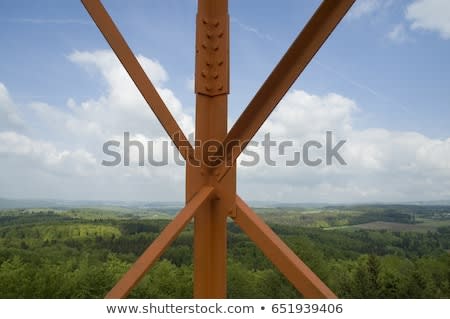Fontain
Structural
- Aug 7, 2015
- 5
Hi
We had a number of towers supplied to us about two years ago with the leg connection shown in the attachment at the point where the lower tapered part joins the non tapered part of the tower. As can be seen all the forces are transferred from the upper part to the lower part through the leg splices, two outer and two inner plates. With the towers supplied then, the contractor forgot to install the outer plates, which resulted in the inner plates buckling under the load. The situation was finally sorted by reinforcing the connection, after a number of uncomfortable discussions with the contractor. This past week we run into the same connection with a different client, and it has sparked a lot of debate. I must say it is different from what I usually see but argued that if the splice plates are thick enough,strength wise, it should be fine. The concern I had was to do with stability, I would be somewhat more relaxed if there was a horizontal somewhere in the joint to hold it all together, because as it is, any twist from the upper portion must be resisted and transmitted entirely by those splice plates without allowing the tower to deform in the horizontal plane at the joint. I believe having a horizontal and perhaps some diaphragm bracing would arrest such deformation thus making the joint more stable. But that's just my thinking, I thought it wise to seek an alternative opinion. So, what are your thoughts in regard to this connection?
Thanks
We had a number of towers supplied to us about two years ago with the leg connection shown in the attachment at the point where the lower tapered part joins the non tapered part of the tower. As can be seen all the forces are transferred from the upper part to the lower part through the leg splices, two outer and two inner plates. With the towers supplied then, the contractor forgot to install the outer plates, which resulted in the inner plates buckling under the load. The situation was finally sorted by reinforcing the connection, after a number of uncomfortable discussions with the contractor. This past week we run into the same connection with a different client, and it has sparked a lot of debate. I must say it is different from what I usually see but argued that if the splice plates are thick enough,strength wise, it should be fine. The concern I had was to do with stability, I would be somewhat more relaxed if there was a horizontal somewhere in the joint to hold it all together, because as it is, any twist from the upper portion must be resisted and transmitted entirely by those splice plates without allowing the tower to deform in the horizontal plane at the joint. I believe having a horizontal and perhaps some diaphragm bracing would arrest such deformation thus making the joint more stable. But that's just my thinking, I thought it wise to seek an alternative opinion. So, what are your thoughts in regard to this connection?
Thanks

